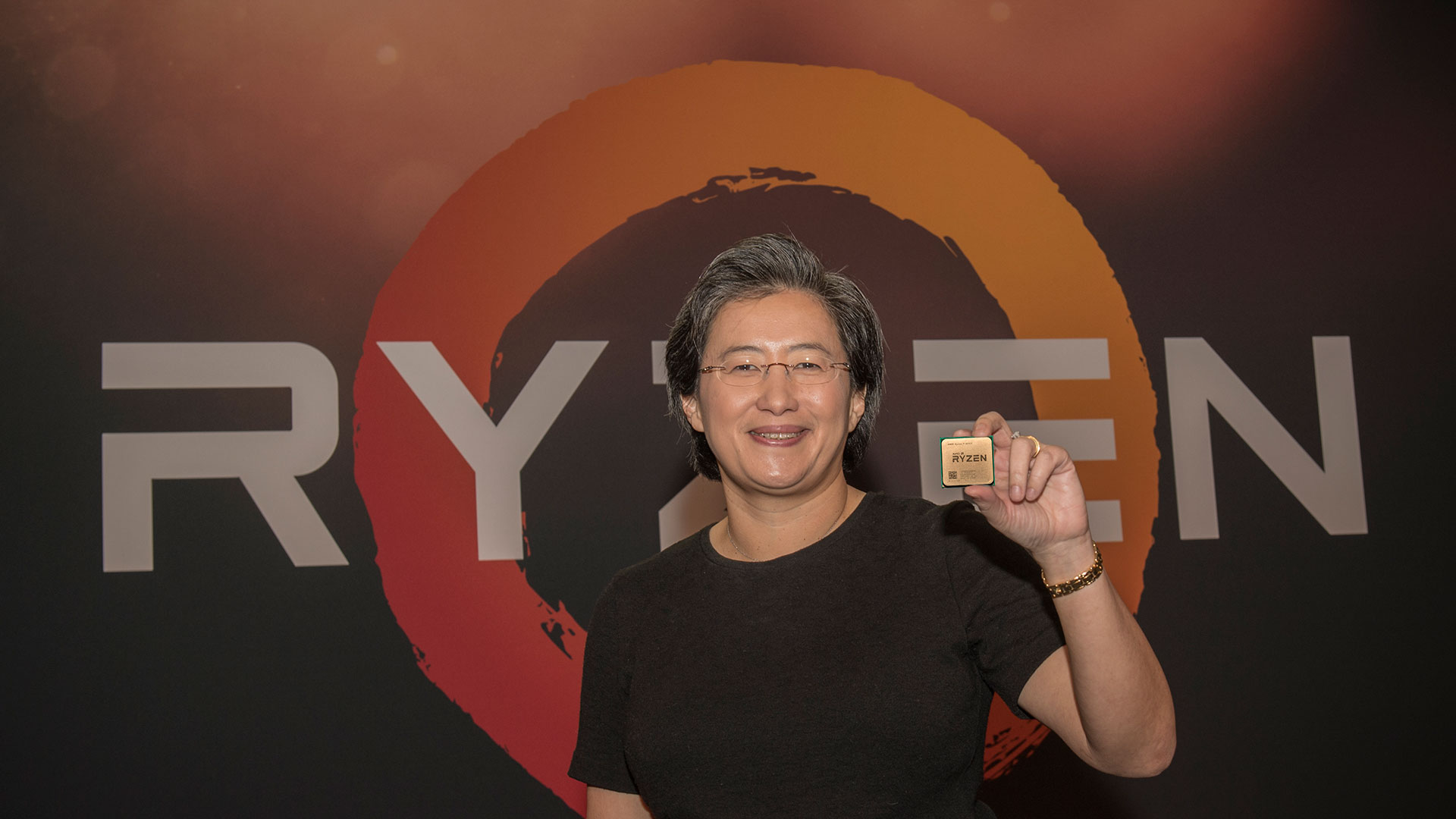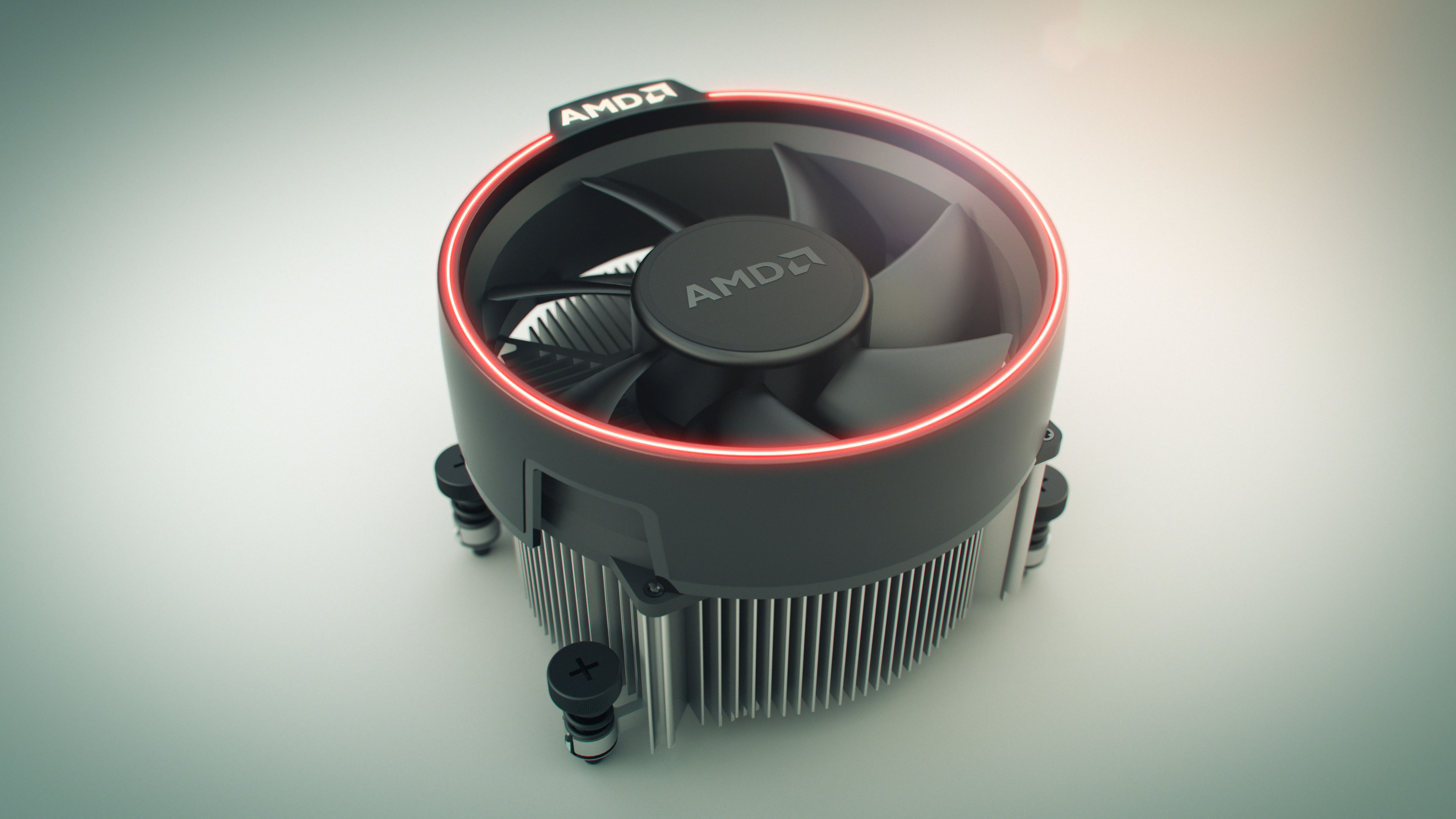AMD Ryzen 7 prepares for worldwide launch on March 2
Official specs and pricing finalized, and a sneak peek at performance.

After months—nay, years—of buildup, AMD's Ryzen is finally here. Well, almost. Today, AMD is revealing the official launch specs and pricing for its new Ryzen 7 processors, and select partners will have the processors available for pre-order. The actual hard launch of Ryzen products will occur on March 2, so one more week until we can unleash the hounds and provide full benchmarks. Today, AMD is providing a sneak peek at performance to whet your appetite.
If you've been following the various Ryzen rumors floating around, prices are a bit different from the previous 'leaks' (which may have been more educated guesses than actual leaks). Specifications on the other hand match what we've previously reported, at least on the 8-core/16-thread parts. And that brings me to the first new concrete information you'll need to digest: the only Ryzen parts being revealed are the top-end Ryzen 7 chips. AMD is starting with high-end parts that compete at the top of the performance stack. Here are the official specs:

If you were hoping to see maximum clocks in the mid 4GHz range (eg, 4.3-4.5GHz), that's not happening. The halo product is the Ryzen 7 1800X, with a base clock of 3.6GHz and a maximum turbo clock of 4.0GHz. There are plenty of details I'm not able to dig into at present—never fear, all will be revealed in due time—like the Extended Frequency Range, or XFR. But if you're looking at the Core i7-6900K as the primary competition for the 1800X, AMD has Intel beat on clock speeds at least, and pricing is no contest. AMD's top Ryzen part costs less than half as much as Intel's 'equivalent' 8-core/16-thread part. Intel for its part offers a bit more L3 cache, 20MB compared to 16MB, and clock speeds alone don't tell the whole story, but I'll get to that in a moment.
Next down the stack is the Ryzen 7 1700X, which AMD is billing as an alternative to the i7-6800K. Here, AMD has a core count advantage, along with a lower price by about $40, with a very slight clockspeed advantage on the turbo clock—3.8GHz compared to the 6800K's 3.6GHz, though both have the same 3.4GHz base clock. Other features and specs for Ryzen are the same, including the 95W TDP and 16MB L3 cache.
The third and final part is the Ryzen 7 1700, with a base clock of 3.0GHz and a maximum turbo clock of 3.7GHz. AMD pits this against Intel's 4-core/8-thread i7-7700K, with a price about $20 lower and twice as many cores/threads. The difference of course is that Kaby Lake can clock as high as 4.5GHz (stock), compared to 3.7GHz, but AMD does have a power advantage with the 1700 sporting a 65W TDP. That's by far the lowest power rating ever seen on an 8-core consumer processor, and I can only hope that overclocking will still land pretty close to the same levels as the more expensive 1800X.
Looking at the specs and pricing, Ryzen should definitely turn some heads, but only if performance is up to snuff. While independent benchmarking is not yet available (or allowed by AMD), AMD did come prepared with numerous benchmarks via live demonstrations. As always, don't take these as the one and only truth for Ryzen performance. I suspect we'll find plenty of situations where Ryzen may not end up doing quite as well, relative to Intel's CPUs, but for many common benchmarks and workloads things look promising. Here are the results AMD showed us so far (and I was able to validate these numbers in a demo session where AMD had various systems available).

Starting with the Ryzen 7 1800X, AMD has previously shown performance without turbo modes enabled. This time, we have what should be final performance, with the 1800X scoring about nine percent higher than the i7-6900K in the multi-threaded test. The second aspect of Cinebench 15 is the single-threaded result, which can be a good indication of workloads that don't scale quite so well with core counts—like gaming. And here, AMD matches the i7-6900K with a result of 162. That's equal to Intel's Broadwell-E parts, but obviously slower than the higher-clocked Skylake and Kaby Lake processors. For reference, in my testing the i7-7700K scored 195 in single-threaded Cinebench and 989 multi-threaded, and i7-6900K scored 153 single and 1539 multi. The other performance result that AMD provided at the demonstration was HandBrake encoding, where the 1800X took 61.8 seconds and the 6900K required 71.8 seconds.
The biggest gaming news, reviews and hardware deals
Keep up to date with the most important stories and the best deals, as picked by the PC Gamer team.

Next, looking at the Ryzen 7 1700X, AMD showed a Cinebench score of 1,537 compared to 1,108 on the i7-6800K and 1,474 on the i7-6900K. This is a $399 part that's still taking on a $1050 part, at least in this particular test. Obviously AMD holds a core count advantage over the 6800K, and the 6800K is a more interesting CPU from Intel. AMD also had a 'mega-tasking' demonstration, where they combined Blender 3D rendering, HandBrake encoding, and Octane 2.0—all running at the same time. In this test, it took the 6800K 112.3 seconds compared to 92.0 seconds on the 1700X.

Finally, for Ryzen 7 1700 going up against the i7-7700K, again just looking at Cinebench multi-threaded, AMD comes out with a significant lead. We were shown a few other demos of performance, including using OBS to livestream Dota 2 while using x264 1080p encoding. This is an interesting test as the encoding in this case ends up being done on the CPU, which results in some dropped frames on the Intel rig. The caveat is that there are other encoding methods (fixed function via either the GPU or using Intel's Quick Sync technology) that don't exhibit that problem, though the encoding quality is generally best on x264 CPU-based encoding.

A return to competition
So what does this all mean? In short, it means that for the first time in about ten years, AMD actually has a viable shot at the top spot in CPU performance, at least in certain benchmarks. The last complete CPU architecture redesign from AMD was Bulldozer, which came out in late 2011. More than five years later, we finally have a return to competition from Team Red.
I wouldn't recommend running out and pre-ordering just yet, as we definitely need independent testing on a larger selection of workloads, but Ryzen looks good so far. I'll be digging into additional architectural details, the AM4 platform, performance, and overclocking as soon as the embargo lifts, which is set for March 2. I've already previewed a lot of this in our main Ryzen hub, but AMD has kept a few things secret for the official launch. Stay tuned, and until then, below is AMD's CEO Lisa Su covering much of the above information.
Update: I finally got my videos online, showing live benchmarks/performance of Ryzen vs. Broadwell-E and Kaby Lake.
Jarred's love of computers dates back to the dark ages when his dad brought home a DOS 2.3 PC and he left his C-64 behind. He eventually built his first custom PC in 1990 with a 286 12MHz, only to discover it was already woefully outdated when Wing Commander was released a few months later. He holds a BS in Computer Science from Brigham Young University and has been working as a tech journalist since 2004, writing for AnandTech, Maximum PC, and PC Gamer. From the first S3 Virge '3D decelerators' to today's GPUs, Jarred keeps up with all the latest graphics trends and is the one to ask about game performance.



